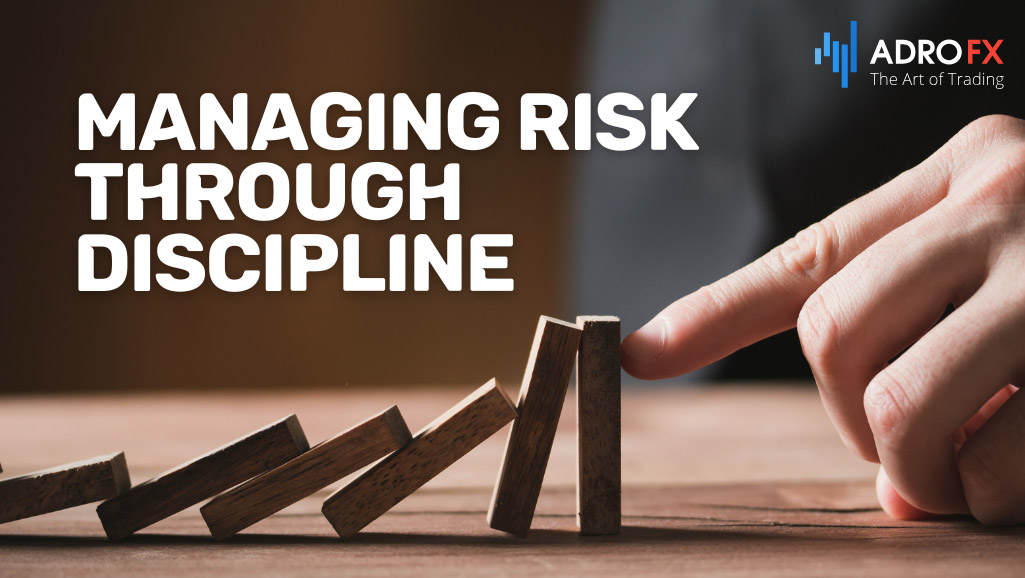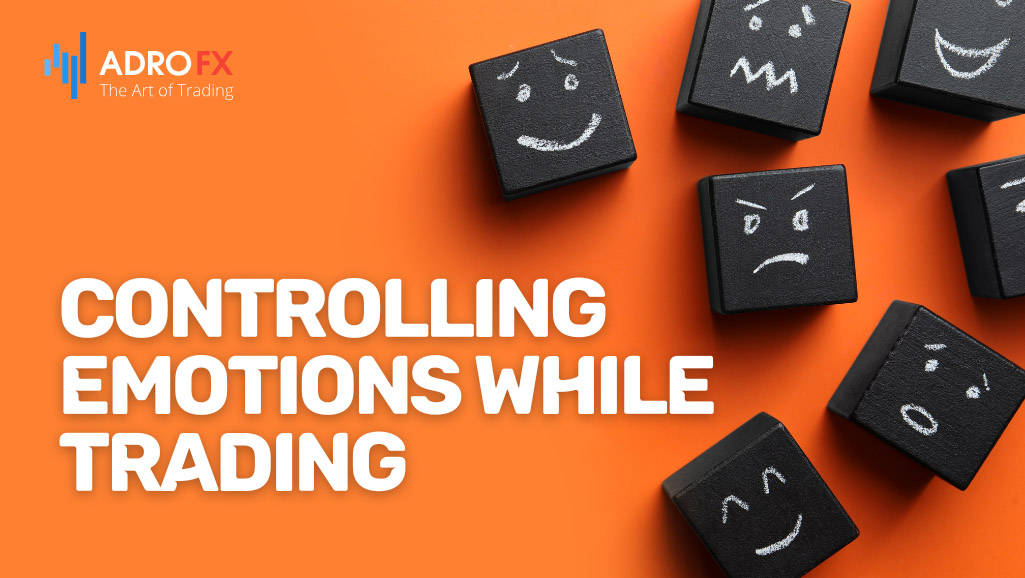Financial Discipline in Trading: Key to Long-Term Success

In the world of trading, financial discipline is a cornerstone for achieving consistent success. It involves adhering to a well-defined strategy, managing risks effectively, and keeping emotions in check - critical factors that separate successful traders from those who struggle. Financial discipline in trading helps individuals maintain control over their decisions, ensuring that they follow a structured approach rather than impulsively reacting to market fluctuations.
Disciplined trading means having the patience to wait for the right opportunities, the fortitude to cut losses when necessary, and the restraint to avoid unnecessary risks. By establishing a clear set of rules and sticking to them, traders can reduce errors, preserve capital, and create long-term profitability. Without discipline, even the most promising trading strategies can quickly unravel, leaving traders exposed to significant losses.
Why Financial Discipline is Crucial
Financial discipline in trading is essential because emotional decisions often lead to costly mistakes. When traders allow fear, greed, or even overconfidence to influence their actions, they may make hasty decisions such as entering trades too early, holding onto losing positions in the hope of recovery or exiting winning trades prematurely to "lock in" a quick gain. These emotional reactions undermine even the most well-researched strategies, exposing traders to unnecessary risks and eroding profits. For example, fear can cause a trader to cut their losses too soon, missing out on a potential recovery, while greed can lead to overtrading or excessive risk-taking, increasing the chances of large losses.
A disciplined trader, on the other hand, understands the importance of sticking to a pre-planned strategy. This approach promotes consistency, as it allows traders to rely on established rules and avoid the pitfalls of impulsive decisions. A well-crafted trading plan includes specific entry and exit points, predetermined risk levels, and clear guidelines for position sizes. By following these rules, traders are better equipped to navigate the inevitable fluctuations of the market, helping them avoid emotional reactions to short-term changes.

Discipline also enables traders to maintain a level head during periods of heightened volatility, a time when many traders lose focus and make rash decisions. The importance of financial discipline cannot be overstated - it is the backbone of any successful trading career. Traders who exercise discipline are able to stay focused on their long-term goals, adapt to market conditions without panicking, and ultimately achieve profitability over time. Without discipline, even the best trading strategies can falter, resulting in inconsistency and loss of control over financial outcomes.
Setting Realistic Goals
One of the key foundations of successful trading is setting realistic, attainable goals. Traders need to define what they aim to achieve, both in the short and long term, so they can chart a clear path to success. Short-term goals, such as daily or monthly profit targets, should be specific and achievable. For instance, a trader might aim for a modest percentage gain each month rather than aiming for unrealistic returns that can lead to overtrading or excessive risk-taking. These goals not only provide motivation but also serve as benchmarks to measure progress.
Short-term goals, however, should remain flexible. Markets are dynamic, and conditions can change quickly. A goal that seemed reasonable during a bull market may be unattainable in a downturn. Traders need to adjust these targets based on current market conditions to avoid unnecessary pressure or frustration. Long-term financial goals, such as wealth-building or reaching a certain level of capital growth over several years, provide a broader framework that helps traders stay focused on their overall objectives without getting distracted by short-term losses or gains.
Setting realistic financial goals also prevents traders from becoming overly ambitious, which can lead to burnout or risky behavior. Many traders fail because they set goals that are too aggressive, resulting in disappointment and emotional responses when they fall short. Realistic goals help traders maintain discipline by encouraging a sustainable trading strategy - one that balances risk and reward and allows for gradual progress over time. In this way, setting financial goals becomes not just a measure of performance but also a tool for fostering patience and resilience.
Managing Risk through Discipline
Managing risk is one of the most critical aspects of trading, and disciplined traders understand that controlling risk is the key to long-term survival in the markets. Every trade comes with some level of uncertainty, no matter how confident a trader may be in their analysis. Without a solid risk management plan, even a small number of losing trades can lead to significant financial damage, potentially wiping out gains from profitable trades. Disciplined traders use a variety of risk management strategies to protect their capital, ensuring that no single trade or series of trades has the potential to devastate their account.
One of the most common and effective risk management tools is the Stop Loss order. A Stop Loss automatically closes a trade when it reaches a predetermined loss level, preventing the trader from holding onto a losing position in the hope that it will recover. This tool acts as a safeguard, protecting traders from the emotional temptation to "ride out" losses, which often results in deeper financial damage. By pre-setting an acceptable loss threshold, traders limit their downside and avoid catastrophic losses.

Position sizing is another essential aspect of risk management. Traders should only risk a small percentage of their capital on each trade to ensure that even a string of losses won’t significantly harm their overall account. By controlling the size of each trade relative to their total capital, disciplined traders can spread their risk and avoid concentrating too much exposure in any one trade or market condition.
Finally, the risk-reward ratio is a vital element of disciplined risk management. A favorable risk-reward ratio ensures that the potential reward of a trade outweighs the risk being taken. For example, a trader might risk $100 on a trade with the expectation of making $300 in profit, resulting in a 3:1 risk-reward ratio. By consistently seeking out trades with a higher potential reward than risk, traders can afford to be wrong on some trades while still maintaining profitability over the long term. Together, these strategies form the backbone of a disciplined approach to risk management, allowing traders to control potential losses while positioning themselves to capture profits.
Also read: Stop Loss in Trading: How to Say No
Controlling Emotions and Staying Rational
In trading, emotions like fear and greed are often the biggest obstacles to success. These emotions can cloud judgment and lead to impulsive, irrational decisions that disrupt a well-thought-out trading strategy. Fear can cause traders to prematurely exit a position, missing out on potential gains when the market turns in their favor. Greed, on the other hand, can push traders to overextend themselves, taking unnecessary risks in hopes of achieving higher profits. Both of these emotional reactions are dangerous because they cause traders to deviate from their plan and make decisions that are not based on logic or market conditions.
Emotional control in trading is essential for long-term success. It allows traders to make decisions grounded in analysis and strategy rather than reacting to temporary market fluctuations or emotional triggers. For example, when markets become volatile, fear might drive a trader to sell off assets during a short-term dip, missing the chance for a rebound. Conversely, greed can lead to traders holding onto positions longer than they should, chasing profits beyond what is reasonable, or making over-leveraged trades that expose them to massive risks.
To maintain a clear, rational mindset, traders must develop a disciplined routine. This starts with having a solid trading plan that outlines specific entry and exit points, risk management strategies, and position sizes. Regularly reviewing and adhering to this plan, regardless of market emotions, helps prevent impulsive decision-making. Traders should also set clear rules for when and how they’ll react to certain market events, so they don’t fall into the trap of letting emotions dictate their actions.

Another key to controlling emotions is learning to accept losses as an inevitable part of trading. Even the most successful traders experience losing trades, and it’s essential not to let these losses affect future decisions. When traders become fixated on a single trade, especially after a loss, they are more likely to engage in "revenge trading," where they take on more risk to recover their losses quickly. This type of trading often leads to bigger losses, as it is driven by emotion rather than logic.
Staying rational means focusing on the bigger picture and long-term goals, rather than getting caught up in short-term market noise. By accepting that losses happen and focusing on overall strategy and long-term performance, traders can navigate market fluctuations without letting their emotions take over. Developing emotional discipline takes time and practice, but it’s one of the most critical skills a trader can possess. In the end, by keeping emotions in check, traders will be better positioned to make sound, strategic decisions, leading to more consistent and successful outcomes in the markets.
Also read: The Psychology of Trading: How to Manage Your Emotions
Creating and Following a Trading Plan
A trading plan serves as a roadmap for maintaining discipline in the often unpredictable world of trading. It provides a structured approach, outlining the strategies, rules, and criteria for entering and exiting trades. By having a clear plan, traders can avoid emotional decision-making and stay committed to their long-term goals, even during periods of market volatility.
Creating an actionable trading plan involves several key steps. First, traders must define their trading style, whether it be day trading, swing trading, or long-term investing. Next, they should establish criteria for trade entry and exit, incorporating technical indicators, market conditions, or price levels. Setting risk management rules, such as Stop Loss and Take Profit levels, is crucial for protecting capital. Finally, traders must outline their capital allocation and position sizing strategies.
Sticking to a trading plan requires discipline and self-control. Even when market conditions change, a disciplined trader will resist the urge to deviate from their plan. Regularly reviewing and adjusting the plan to reflect evolving market trends ensures that the strategy remains effective and aligned with financial goals.
Also read: Crafting an Exceptional and High-Performing Day Trading Plan
Tracking Progress and Continuous Improvement
To succeed in trading, it’s vital to monitor performance and track every trade. Trade tracking involves keeping a detailed record of trades, including entry and exit points, profit or loss, and the reasons behind each decision. This practice allows traders to identify patterns in their behavior, highlight strengths, and expose weaknesses in their strategy.
Learning from mistakes is a key part of improving as a trader. By reviewing past trades, traders can analyze what went wrong and adjust their approach moving forward. This might involve refining entry criteria, adjusting position sizes, or modifying risk management techniques. Regularly reviewing progress helps traders stay on track and make continuous improvements to their trading plan.
The goal of trade tracking is not just to monitor results, but to foster a mindset of constant learning and adaptation. The markets are always changing, and successful traders are those who can evolve with them by continuously refining their strategies and improving their decision-making processes.
Final Thoughts
Discipline is not just a useful trait in trading - it is the foundation for long-term success. Without it, even the most well-researched strategies and market insights can fall apart. The ability to stay disciplined allows traders to navigate the uncertainties of the market with a steady hand, avoiding the impulsive decisions that often lead to significant losses. Successful disciplined trading means adhering to a well-defined plan, managing risk meticulously, and maintaining emotional control, all of which contribute to consistent performance over time.
In the fast-paced and unpredictable world of trading, discipline is what separates consistent traders from those who struggle. It helps traders avoid the common traps of greed, fear, and overconfidence, ensuring that decisions are made logically rather than emotionally. Sticking to a trading plan - even during volatile periods - provides structure and keeps traders aligned with their long-term goals. This approach prevents unnecessary risks and rash choices that could jeopardize their trading accounts.
Moreover, discipline in managing risk is crucial for long-term growth. Implementing strategies like Stop Loss orders and proper position sizing allows traders to limit their downside, protecting capital while still allowing room for profitable trades. Long-term trading discipline is not about avoiding risk altogether but about making calculated, informed decisions that balance potential reward with acceptable risk. This methodical approach fosters slow but steady progress, which is essential for sustained success.
It is also important to acknowledge that discipline in trading is a continuous process. Markets evolve, and traders must regularly review their plans, strategies, and performance to stay adaptable. This ongoing improvement ensures that they are always refining their approach, learning from both successes and mistakes, and making adjustments that keep them competitive in ever-changing conditions.
Ultimately, disciplined trading is the key to achieving lasting financial success. By embedding discipline into every aspect of trading - whether it’s sticking to a plan, managing risk, or controlling emotions - traders give themselves the best possible chance for consistent performance. Practicing this discipline not only preserves capital but allows for sustainable growth, ensuring that trading becomes a rewarding endeavor over the long term.
If you're ready to embrace the power of disciplined trading and take your financial journey to the next level, unlock advanced trading tools, real-time market data, and expert support with AdroFx. Here you'll have access to advanced tools, resources, and support that can help you stay disciplined, manage risks, and grow your trading portfolio. Start your journey toward long-term trading success today!
About AdroFx
Established in 2018, AdroFx is known for its high technology and its ability to deliver high-quality brokerage services in more than 200 countries around the world. AdroFx makes every effort to keep its customers satisfied and to meet all the trading needs of any trader. With the five types of trading accounts, we have all it takes to fit any traders` needs and styles. The company provides access to 115+ trading instruments, including currencies, metals, stocks, and cryptocurrencies, which make it possible to make the most out of trading on the financial markets. Considering all the above, AdroFx is the perfect variant for anyone who doesn't settle for less than the best.










